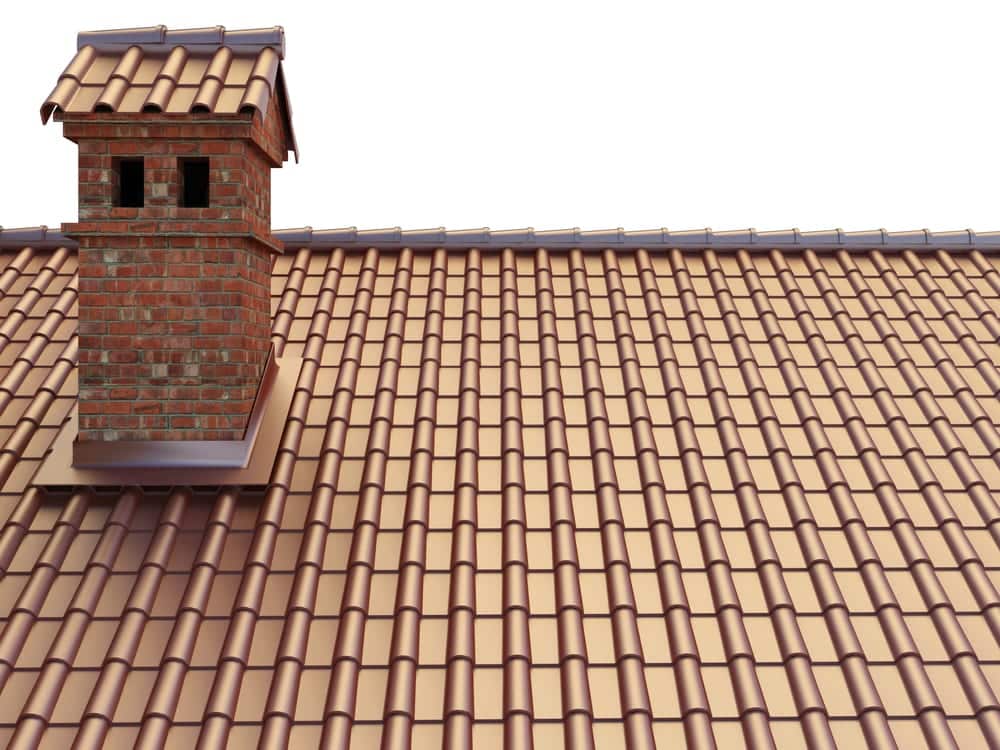If you’ve spent much time browsing our blog, you probably already know that a roof is much more than a collection of shingles. A quality roof needs a wide variety of equally important components to protect your home from the elements – and roof flashing is one of the most essential components your roofer will install. When in doubt, remember that even the sturdiest roofing material is nothing without proper flashing installation. But what is roof flashing, and why is it necessary? Find out more about the importance of different types of flashing.
Roof Flashing 101
What Is Roof Flashing?
Roof flashing is one of those roofing components that seems extremely simple but serves an essential purpose. Flashing is essentially a roll of thin, moisture-resistant metal installed on your roof. Flashing material varies, with manufacturers typically opting for sturdy metals like copper, lead, or aluminum. To install flashing, your roofer rolls it out – think of a rug or a blanket – before sealing it, which prevents mold and leakage issues.
Why Is Flashing Necessary?
When properly sealed, flashing should protect your roofing materials from water. Flashing also protects skylights, vents, and roof valleys. Flashing’s function is fairly simple: It works by collecting pooled water, diverting it away from sensitive roof areas. It’s especially important if you live in wet or otherwise volatile climates.
Types of Roof Flashing
Not all materials and installation methods are created equal. There are several different types of roof flashing, and each serves distinct purposes:
- Chimney Flashing: As you might expect, roofers apply this type of flashing around the base of a chimney to protect the home from excess moisture. Roofers typically apply continuous flashing along the bottom of a chimney with alternating step and saddle flashing up either side of the chimney.
- Step Flashing: Picture a standard flight of stairs. Step flashing looks a bit like that. This type of material “steps” up a roof, protecting the vulnerable areas where the roof meets chimneys, skylights, and dormers. Also like a flight of stairs, step flashing is composed of a series of right-angled metal pieces so each piece snugly fits into the next.
- Valley Flashing: The space where two shingle planes meet is known as the “valley” of the roof. Like geological valleys, roof valleys are prone to collecting water. Valley flashing protects that space, moving pooled water away from the space between the roof planes.
- Vent Pipe Flashing: Finally, if you have pipes penetrating your roof, you know that they can be vulnerable to leaks – particularly along pipe cracks. Vent pipe flashing prevents leaks, with roofers placing it over external pipes and flues for a snug fit.
_____
As you can see, roof flashing might seem simple. However, it serves a very important purpose. The various types of flashing all protect the most vulnerable areas from excess water and mold damage. If you’re not sure where to start when it comes to roofing materials, make sure to consult a professional familiar with your climate and your unique home needs.
If you live in southwest Missouri, contact Taylor-Made Roofing for help with your roofing needs. Our experts can help you explore new roofing options, maintain an older roof, perform emergency repairs, complete tear-offs and recovers, and perform remodeling services. With over 20 years of experience in residential and commercial roofing, Taylor-Made Roofing is a company that you can trust with all of your roofing needs. Our family-owned business offers quality services, a reassuring warranty, and free estimates. For more information regarding roofing options, please give us a call at 417-326-8778 or contact us online. We look forward to hearing from you!

